NOTE:
These program notes are published here for patrons of the
Madison Symphony Orchestra and other interested readers. Any
other use is forbidden without specific permission from the author.
Madison Symphony
Orchestra Program Notes
December 6-7-8, 2024
99th Season / Subscription Program 4
J. Michael Allsen
The
MSO’s
annual presentation of “A Madison Symphony Christmas”
has become a beloved
musical holiday tradition in Madison. This year includes
everything you’ve come
to expect: fine choral performances by the Madison
Symphony Chorus, Madison
Youth Choirs, and a rousing Gospel conclusion led by the
Mt. Zion Gospel Choir.
We also welcome two fine vocal soloists, Madison-based
soprano Vanessa Becerra,
and baritone Craig Irvin.
For many years Joy
to the World was credited
to
Handel—who almost certainly did not
write it. One of the first to publish the melody, hymn
writer William
Holford printed it with Handel’s
name in the early 1830s, probably because of its close
resemblance to a few
bits from the ever-familiar Messiah. The
great Methodist hymn writer Lowell Mason
also credited Handel when he revised the tune in 1839
and used it to set the Christmas
hymn text Joy to
the World by Handel’s
contemporary Isaac Watts. While Mason usually gets
credit for this melody, the
composer of the original version remains a mystery. It
is heard here in a
suitably grand arrangement by Mack Wilberg, conductor of
the Mormon Tabernacle
Choir since 2008.
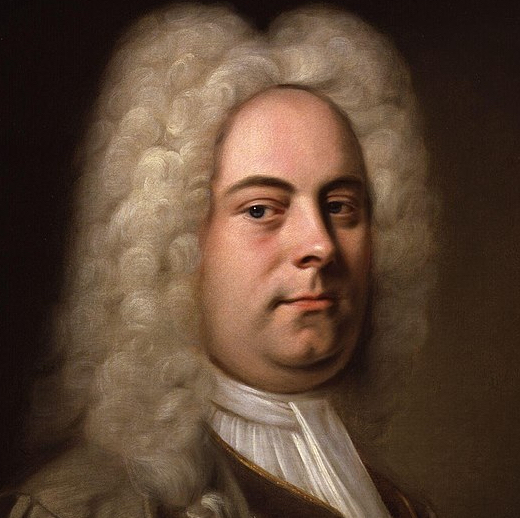 Next is a piece of
genuine Handel, a brilliant aria from his oratorio
Messiah.
In 1717, George
Frideric Handel moved to England
to compose and produce opera. For nearly two decades,
Handel was the most
successful opera impresario
in
England, but by the 1730s, Italian opera had gone out of
fashion, and he turned
increasingly to the English oratorio. His
oratorios—dramatic renderings of
Biblical stories familiar to his English audiences—were
enormously successful,
and their popularity endured and grew long after Handel’s
death. Messiah
of 1741 is, of course, Handel’s
most enduring hit, but it is somewhat unusual among his
oratorios in that his
text is a pastiche of direct quotes from the “King James”
version of the Bible.
The baritone aria The Trumpet Shall Sound, comes from
Part III. This adapts the da capo form
heard in most of his
earlier opera arias. It opens with a brilliant trumpet
passage, and when the
bass enters it is with sweeping fanfare motive of his own.
Baritone and trumpet
weave counterpoint around one another in the opening
section. The baritone is
left alone for the more pensive middle section, before a
joyful ornamented
repeat of the opening.
Next is a piece of
genuine Handel, a brilliant aria from his oratorio
Messiah.
In 1717, George
Frideric Handel moved to England
to compose and produce opera. For nearly two decades,
Handel was the most
successful opera impresario
in
England, but by the 1730s, Italian opera had gone out of
fashion, and he turned
increasingly to the English oratorio. His
oratorios—dramatic renderings of
Biblical stories familiar to his English audiences—were
enormously successful,
and their popularity endured and grew long after Handel’s
death. Messiah
of 1741 is, of course, Handel’s
most enduring hit, but it is somewhat unusual among his
oratorios in that his
text is a pastiche of direct quotes from the “King James”
version of the Bible.
The baritone aria The Trumpet Shall Sound, comes from
Part III. This adapts the da capo form
heard in most of his
earlier opera arias. It opens with a brilliant trumpet
passage, and when the
bass enters it is with sweeping fanfare motive of his own.
Baritone and trumpet
weave counterpoint around one another in the opening
section. The baritone is
left alone for the more pensive middle section, before a
joyful ornamented
repeat of the opening.
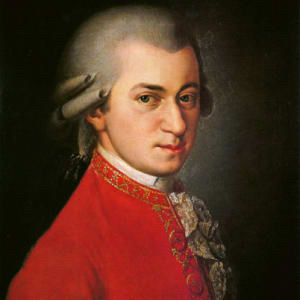 Wolfgang
Amadeus Mozart created a large body of music
for the Catholic church:
eighteen Masses (including the unfinished Requiem),
four Litanies, three
Vespers, and dozens of shorter settings of Latin texts.
While much of this
liturgical music was composed for the Archbishop of
Salzburg, the solo motet Exsultate
jubilate,
composed a few days before Mozart’s seventeenth birthday,
was written during a
visit to Milan in the winter of 1772-73 Exultate
jubilate was not
originally composed for a woman’s voice, but rather for
the castrato
Venanzio Rauzzini, who had sung the principal role in
Mozart’s opera Lucio
Silla a few weeks earlier, in December of 1772.
This piece is not
really a motet in the traditional sense, though it does
set a Latin text for
the Virgin Mary, but a sort of operatic scena for
soprano and small
orchestra. (The text may have been written by Rauzzini
himself, a noted
composer in his own right.) The style is that of Mozart’s
opera
buffa, with
three arias grouped around a central recitative. The
opening section, Exsultate, jubilate, is a joyous
aria with an orchestral
introduction, giving extensive play to the word
psallat (sing). The
brilliant
concluding Alleluia
is
frequently performed as an independent coloratura
showpiece.
Wolfgang
Amadeus Mozart created a large body of music
for the Catholic church:
eighteen Masses (including the unfinished Requiem),
four Litanies, three
Vespers, and dozens of shorter settings of Latin texts.
While much of this
liturgical music was composed for the Archbishop of
Salzburg, the solo motet Exsultate
jubilate,
composed a few days before Mozart’s seventeenth birthday,
was written during a
visit to Milan in the winter of 1772-73 Exultate
jubilate was not
originally composed for a woman’s voice, but rather for
the castrato
Venanzio Rauzzini, who had sung the principal role in
Mozart’s opera Lucio
Silla a few weeks earlier, in December of 1772.
This piece is not
really a motet in the traditional sense, though it does
set a Latin text for
the Virgin Mary, but a sort of operatic scena for
soprano and small
orchestra. (The text may have been written by Rauzzini
himself, a noted
composer in his own right.) The style is that of Mozart’s
opera
buffa, with
three arias grouped around a central recitative. The
opening section, Exsultate, jubilate, is a joyous
aria with an orchestral
introduction, giving extensive play to the word
psallat (sing). The
brilliant
concluding Alleluia
is
frequently performed as an independent coloratura
showpiece.
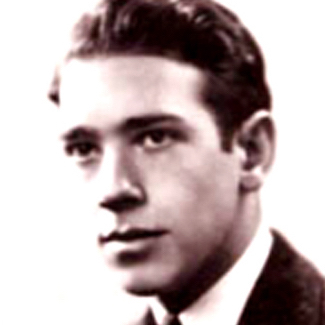 Alfred Burt was
born in Michigan, son of an Episcopal minister. He spent
most of his all-too-brief
career working as a jazz trumpeter and arranger. He is
best known today for a
series of fifteen fine Christmas carols he wrote beginning
in 1942. Burt’s
carols were first intended only for the annual family
Christmas card, sent out
to his father’s parishioners, and to Burt’s family and
friends. Fortunately for
us, he began to let them circulate more widely in the
early 1950s, and while he
was stricken with lung cancer, he conducted a recording of
the first twelve
carols in Hollywood in 1953. That year, Burt wrote three
new carols, including Caroling,
Caroling, completing them just months before
his death at age 33. The
full collection of Alfred
Burt Carols was
published in 1957. Caroling,
Caroling,
like many of Burt’s later carols had a text by Wilha Hutson, the organist at his father’s
church and a family
friend. It was a huge hit for the singer Nat “King” Cole
in 1960 and this song
remains the most often-performed of Burt’s carols.
Alfred Burt was
born in Michigan, son of an Episcopal minister. He spent
most of his all-too-brief
career working as a jazz trumpeter and arranger. He is
best known today for a
series of fifteen fine Christmas carols he wrote beginning
in 1942. Burt’s
carols were first intended only for the annual family
Christmas card, sent out
to his father’s parishioners, and to Burt’s family and
friends. Fortunately for
us, he began to let them circulate more widely in the
early 1950s, and while he
was stricken with lung cancer, he conducted a recording of
the first twelve
carols in Hollywood in 1953. That year, Burt wrote three
new carols, including Caroling,
Caroling, completing them just months before
his death at age 33. The
full collection of Alfred
Burt Carols was
published in 1957. Caroling,
Caroling,
like many of Burt’s later carols had a text by Wilha Hutson, the organist at his father’s
church and a family
friend. It was a huge hit for the singer Nat “King” Cole
in 1960 and this song
remains the most often-performed of Burt’s carols.
 Franz
Joseph Haydn, in his sixties when he completed
The
Creation
in 1798,
considered this massive oratorio to be his greatest
accomplishment, and a
personal statement of faith. It was clearly
inspired by Handel’s Messiah. (Haydn heard a festival performance
of Messiah in May of 1791 while in England,
and was profoundly moved,
reportedly bursting into tears during the Hallelujah
chorus.) The
Creation likewise sets a
series of quotations: in this case, extracts from the
“King James” version of
the Bible: from the first two chapters of Genesis and
the Psalms. Interspersed
with these Bible verses are passages adapted from
Milton’s Paradise Lost. Parts I and II tell the
story of the first six days
of creation, narrated by Milton’s angels, while Part III
is set in the Garden
of Eden. As with Handel, the chorus plays a central role
in the drama. Here we
present the final chorus, Sing the Lord, ye
Voices All.
Capping a long, passionate duet by Adam and Eve, this is
a grand closing to the
oratorio, launching into a rousing fugal setting of the
final words, “Jehovah’s
praise for ever shall endure. Amen.”
Franz
Joseph Haydn, in his sixties when he completed
The
Creation
in 1798,
considered this massive oratorio to be his greatest
accomplishment, and a
personal statement of faith. It was clearly
inspired by Handel’s Messiah. (Haydn heard a festival performance
of Messiah in May of 1791 while in England,
and was profoundly moved,
reportedly bursting into tears during the Hallelujah
chorus.) The
Creation likewise sets a
series of quotations: in this case, extracts from the
“King James” version of
the Bible: from the first two chapters of Genesis and
the Psalms. Interspersed
with these Bible verses are passages adapted from
Milton’s Paradise Lost. Parts I and II tell the
story of the first six days
of creation, narrated by Milton’s angels, while Part III
is set in the Garden
of Eden. As with Handel, the chorus plays a central role
in the drama. Here we
present the final chorus, Sing the Lord, ye
Voices All.
Capping a long, passionate duet by Adam and Eve, this is
a grand closing to the
oratorio, launching into a rousing fugal setting of the
final words, “Jehovah’s
praise for ever shall endure. Amen.”
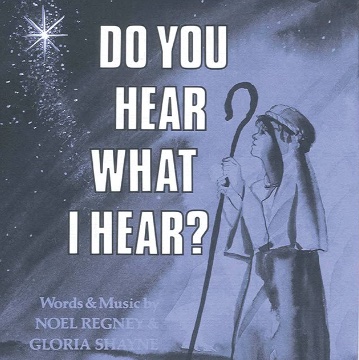 We open the
second half with a
feature for the orchestra. Composer Noel
Regney and his wife, lyricist Gloria
Shayne Baker wrote the Holiday standard Do You
Hear What I Hear? in 1962 and
it became a huge hit for
Bing Crosby in 1963, selling over a million copies.
Though usually heard as a
sentimental song to the Baby Jesus, Regney later said “I
am amazed that people
can think they know the song, and not know it is a
prayer for peace.” It was
written in October 1962, at the height of the Cuban
Missile Crisis, when
nuclear war with the Soviet Union seemed imminent.
Contrary to their usual
practice, Regney wrote the lyric, and his wife wrote the
melody. The result was
a song that they found so moving that they couldn’t bear
to sing it at first. The
final stanza, with its “Pray for peace, people
everywhere!” makes this as
appropriate in 2024 as it was in 1962. It is heard here
in a rich orchestral
arrangement by Todd Hayen.
We open the
second half with a
feature for the orchestra. Composer Noel
Regney and his wife, lyricist Gloria
Shayne Baker wrote the Holiday standard Do You
Hear What I Hear? in 1962 and
it became a huge hit for
Bing Crosby in 1963, selling over a million copies.
Though usually heard as a
sentimental song to the Baby Jesus, Regney later said “I
am amazed that people
can think they know the song, and not know it is a
prayer for peace.” It was
written in October 1962, at the height of the Cuban
Missile Crisis, when
nuclear war with the Soviet Union seemed imminent.
Contrary to their usual
practice, Regney wrote the lyric, and his wife wrote the
melody. The result was
a song that they found so moving that they couldn’t bear
to sing it at first. The
final stanza, with its “Pray for peace, people
everywhere!” makes this as
appropriate in 2024 as it was in 1962. It is heard here
in a rich orchestral
arrangement by Todd Hayen.
The most
familiar of all holiday songs, Jingle
Bells, was written
in the 1850s by James
Pierpont: a
Unitarian minister, organist, photographer, and sometime
songwriter who worked
in Massachusetts California, Georgia, and Florida. Jingle Bells, published in 1857, was not
intended as a “Christmas
song” at all, but rather as a “sleighing song”—a popular
genre at the time.
Pierpont’s song caught on in the later 19th century, when
it gained its
exclusive association with the Holiday season. The lively arrangement presented
here is by the eminent
English choral director and arranger David Willcocks.

Next is a pair of Christmas villancicos (carols) from South America, in an arrangement by Madison’s
own Scott Gendel,
beginning with La buena nueva
(The Good News) This was written in the early
1960s by Peruvian
songwriter Mario
Cavagnaro Llerena,
a singer who strongly identified as criollo,
a musical culture that freely mixes Spanish and Peruvian
indigenous heritages
with influences from across Latin America. the song was
first recorded in 1965,
and became a hit throughout South America. This lively
Christmas tune is in the
style of the Huayno—an
ancient Andean
form with roots in pre-Columbian music. Mi burrito sabanero (The Little Donkey
from the Savannah –
also known as The
Little
Donkey from Bethlehem). The
popular Venezuelan singer and songwriter Hugo
Blanco wrote this charming children’s song in 1972.
The original song
channeled the infectious rhythm of joropo—folk
music of the vast grassland that stretches across
Venezuela and Columbia—but
the song has proven to be endlessly adaptable in a variety
of styles. It became
popular across Latin America in a 1974 cumbia-style
recording by the children’s group La Rondollita, but since
then has been
recorded in Mariachi style, by Salsa bands, in a pop-style
version by the
Columbian star Juanes, and in Reggaeton remixes. Mr.
Gendel provides the
following note:
“Both La buena nueva and El burrito
sabanero are delightful South American songs about
getting nearer to
Christmas morning, anticipation building as the birth of
Jesus gets closer and
closer. To depict that growing excitement, my arrangement
begins with a lovely
pastoral sound, but repeatedly changes to higher keys,
faster tempos, and
increased rhythmic complexity, until the medley ends with
maximum wild energy,
in a very different place than it began. First, the
piece features a
fairly straightforward arrangement of La
buena nueva that incorporates some lush harmonies
along with Peruvian
rhythms. The “chorus” of that song is introduced by
propulsive brass and
percussion, kicking the energy up a notch as the medley
transitions towards El
burrito sabanero. That song takes a
faster tempo, and has a less traditional arrangement
(continuing its history as
adaptable to so many different styles). My arrangement of
El burrito sabanero dances with lighthearted
jubilation until
finally erupting with glee into a percussion section
feature (drum solo!) that
speeds up the tempo and ups the stakes once more. Finally,
nearly twice as
quickly as the medley began, La buena
nueva returns with great excitement, in a higher
key, with the brass
playing El burrito
sabanero in counterpoint,
both songs combining into a frenzy of wild exuberance that
whirls into a final
flourish, nearly exhausted with anticipation for the
coming of Christmas.”
My Grown Up Christmas List, was written in 1990 by lyricist Linda Thompson-Jenner and composer David Foster. This lovely song tells of an adult revisiting Santa and listing a more mature set of wishes: for peace, healing, friendship, justice, and love. It was first recorded in 1990 by Natalie Cole, but has also been covered by Kelly Clarkson, Amy Grant, and many others—a contemporary holiday classic.
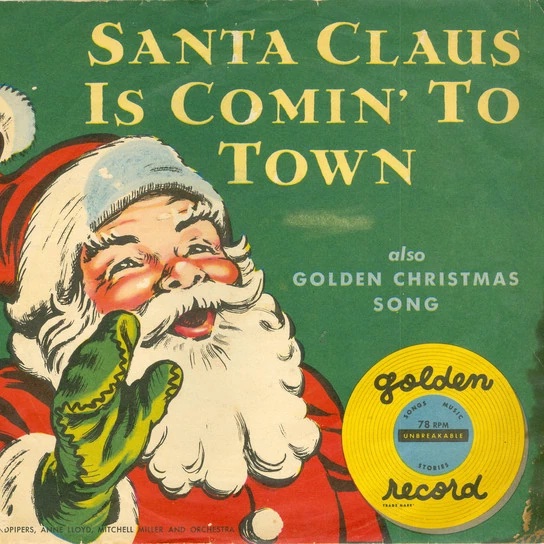 Santa
Claus is Comin’ to Town was written in 1932, a
collaboration between composer J. Fred Coots,
and lyricist Haven
Gillespie. The
song was not introduced until the Holiday season of 1934
by radio star Eddie
Cantor, but it was popular as soon as it hit the airwaves,
undoubtedly lifting
the spirits of Americans in the depth of the Great
Depression. This durable
song sold millions of records for singers from Bing Crosby
to Gene Autry to
Perry Como to the Andrews Sisters, and even inspired an
animated television
special in 1970. Fast forward to 1995... For one of its
early “Holiday
Spectacular” concerts in 1995, the Madison Symphony
Orchestra commissioned Jazz
arranger Frank
Mantooth to create an
updated version of the song for that season. Mantooth’s
swinging arrangement,
building on a choral arrangement by Kirby
Shaw, was premiered in December 1995 by the Madison
Boychoir. Mantooth
later adapted the piece for the larger Madison Symphony
Chorus.
Santa
Claus is Comin’ to Town was written in 1932, a
collaboration between composer J. Fred Coots,
and lyricist Haven
Gillespie. The
song was not introduced until the Holiday season of 1934
by radio star Eddie
Cantor, but it was popular as soon as it hit the airwaves,
undoubtedly lifting
the spirits of Americans in the depth of the Great
Depression. This durable
song sold millions of records for singers from Bing Crosby
to Gene Autry to
Perry Como to the Andrews Sisters, and even inspired an
animated television
special in 1970. Fast forward to 1995... For one of its
early “Holiday
Spectacular” concerts in 1995, the Madison Symphony
Orchestra commissioned Jazz
arranger Frank
Mantooth to create an
updated version of the song for that season. Mantooth’s
swinging arrangement,
building on a choral arrangement by Kirby
Shaw, was premiered in December 1995 by the Madison
Boychoir. Mantooth
later adapted the piece for the larger Madison Symphony
Chorus.
Randol Alan Bass’s Christmas Ornaments is
a lushly-orchestrated choral fantasia on several
familiar holiday tunes. The
section labelled labeled Bell Carols,
brings together a pair
of bell-themed carols, beginning with Ding,
Dong, Merrily on High, whose lively tune was
adapted from a 16th-century
dance. The familiar Carol of the
Bells was written in 1916 by the Ukrainian composer
Mykola Dmytrovich
Leontovych for
a Christmas concert
by students in Kiev. The carol, originally part of a
choral work titled Schedryk,
was inspired by the
traditional Ukrainian legend that all of the bells on
earth rang of their own
accord to announce the birth of Christ. The Carol
of the Bells is a tintinnabular sound portrait of
the pealing of bells of
all sizes.
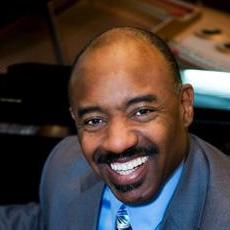
We
end, as always, with a performance by Mt. Zion Gospel
Choir, in arrangements
written specifically for these concerts by the group’s
director, Leotha
Stanley. The first of these brings together two beloved
and gentle Christmas
songs, beginning with What Child is
This.
The lovely tune Greensleeves
seems to have originated in
16th-century England, though it has never been clear who
composed it. One story
credits this song to none other than King Henry VIII, who
supposedly wrote it
for his lover and second wife Ann Boleyn. It’s a great
story...but there is no
evidence that it is true; though Henry was, in fact, an
accomplished composer.
In 1871, Sir John Stainer adapted this tune to set a
Christmas hymn by William
Chatterton Dix, What Child Is This.
One
of the most
popular Christmas songs of recent years—Mary, Did You
Know?—was written as a
lyric in 1984 by singer Mark Lowry,
as an interlude for a church Advent play. In an
interview several years later,
Lowry said, “I tried to picture Mary holding the baby Jesus
on the first Christmas
morning and wondered what she was thinking about that
child...when I wrote it,
I felt there was something special there, but I never
imagined how
wide-reaching it would become.” In 1990, composer Buddy Greene set the lyric to music, and
the song quickly caught on,
with recordings by some three dozen singers. It became a
huge hit for American
Idol star Clay Aiken in 2004 and remains an
often-covered holiday favorite. It
is heard here in a moving arrangement for soprano and
full orchestra. Christmas
Greeting, a Stanley original, was introduced
at these concerts in 2012.
Our grand finale, led by the Mt. Zion Gospel Choir, and featuring everyone
on stage, is O Holy Night. Though he was
respected in his day as
composer of operas and ballet scores (including the
well-known Giselle)
Adolphe Adam is known to American audiences
almost exclusively for
his Christmas carol Cantique
de Noël.
Written in 1847 as a setting of a Christmas poem by Mary
Cappeaux, this carol
was later adapted by J. S. Wright with the English text O Holy Night.
And then, friends, it’s your turn to sing!
________
program notes ©2024 by J. Michael
Allsen